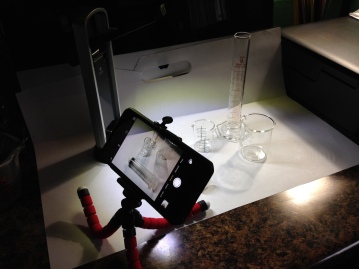Over the past 15 years, online learning has experienced a paradox. As video streaming speeds have increased and bandwidth limitations have decreased, students are increasingly less likely to watch long instructional videos. In fact, data gathered from the viewing habits of thousands of MOOC students show that the average time students stick with an instructional video is six minutes – regardless of the length of the video.
In 2007, advances in streaming speeds made it feasible for me to start creating and sharing “lecture tidbit” videos with my online students. I had a (then) cutting edge (and expensive) home set-up with a microphone headset, wired Wacom tablet, white board drawing program, and Camtasia screencasting program. My videos averaged 15-20 minutes long. Students told me they watched them over and over. Those videos are still accessible and active. The last time a student told me they watched one of them “over and over”? At least three or four years ago.
It’s time for a change.
I’ve started to replace the videos. I’m shooting for concentrated bursts of information, no more than two minutes long. I’m making the videos part of narratives – more of an immersive experience – embedded within storyline presentations, allowing for not only instruction – but also practice and self-assessment activities. My first overhaul has been my pharmacology med math activities. Formerly, the activities were static Power Point and worksheet based. Now, they are dynamic.
 The new activities use video and practice embedded into Articulate Storyline presentations. Storyline is a pricy program, but Office Mix, a free Power Point add-on, has some of the same rudimentary functions (including self-assessment quizzing). Other than Storyline, the tools of the screencasting trade have decreased in cost and increased in ease of use and access. I record video on my phone, using the native camera app. I have a small flexible tripod for demos. For whiteboard videos, I use the Vittle video app on my iPad – no dedicated drawing tablet required. Both Vittle feed and camera app videos upload seamlessly into Storyline. And Storyline, an HTML 5 publishing product, avoids the device limitations of Flash.
The new activities use video and practice embedded into Articulate Storyline presentations. Storyline is a pricy program, but Office Mix, a free Power Point add-on, has some of the same rudimentary functions (including self-assessment quizzing). Other than Storyline, the tools of the screencasting trade have decreased in cost and increased in ease of use and access. I record video on my phone, using the native camera app. I have a small flexible tripod for demos. For whiteboard videos, I use the Vittle video app on my iPad – no dedicated drawing tablet required. Both Vittle feed and camera app videos upload seamlessly into Storyline. And Storyline, an HTML 5 publishing product, avoids the device limitations of Flash.
Once published, students can access the activities from both desktop and mobile devices. My old Camtasia videos, uploaded to the LMS, were only available on LMS-compatible devices. Since my college uses an outdated non-mobile LMS, that was a limitation. Over time, I had transferred some of the videos to YouTube to increase accessibility. But, YouTube does not allow for interactivity. Storyline activities can be hosted both within and outside of the LMS. I maintain my own domain and website for maximum flexibility, but most schools will also provide server space to host the activities.
Online education is a field where the only constant is change. One of the things I love most about working in this area is exploring all of the ways to help maximize student learning. Moving from text to video in 2007 increased student engagement. I anticipate that moving to an interactive video/skills mix will provide even greater levels of immersion.